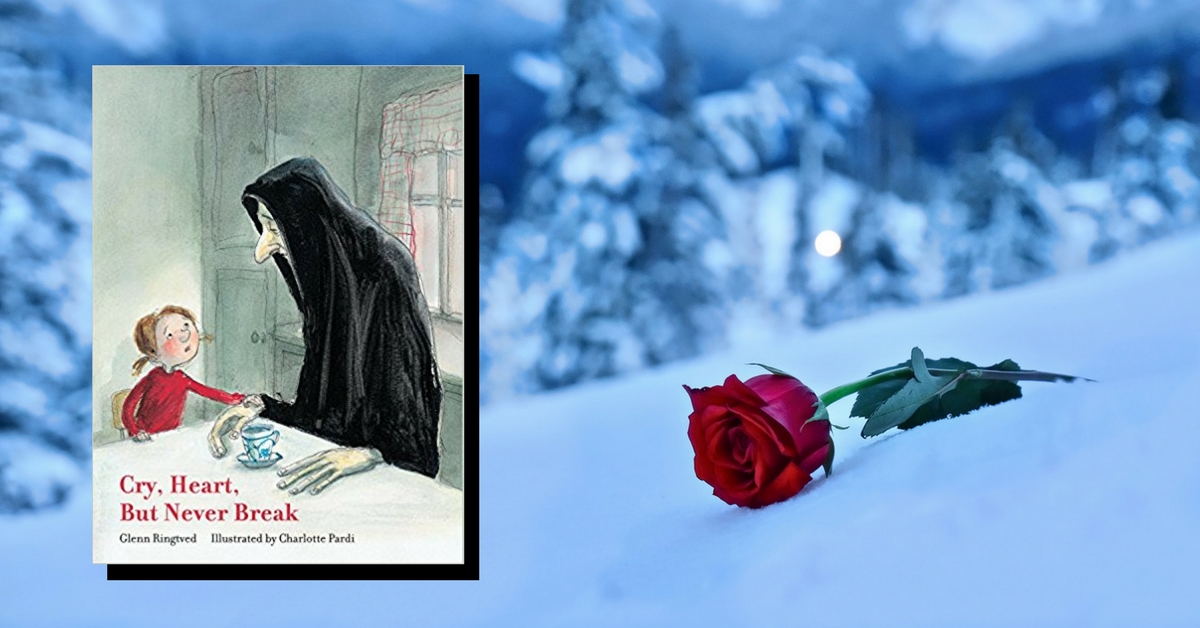Where Do You Put The Pain?
Dr. Linda Miles reviews the children’s book, Cry Heart, But Never Break and discusses what it teaches us about death, loss and grief.
- Do you feel numbed or overwhelmed with pain?
- Are you wondering how to deal with loss or grief?
- Are you afraid of facing your pain or grief, for fear of being swallowed by your suffering?
An Empathetic Death
Much of the best self-help is found in great literature. As a former English teacher and psychotherapist
for over 30 years, I have collected stories. There are many stories, as quiet and as brilliant as
gemstones peeking from the ground, that deal with the momentous theme of mortality, the meaning of
life, and the meaning of death. Some of the most powerful and poignant of these are children’s
books. One such riveting tale was written by Danish author Glenn Ringtved. It is stirringly entitled: Cry,
Heart, But Never Break.
The story tells of Death’s house call to four small children who live with their grandmother, whom they
love very much and who is dying. In the story, Death is portrayed as a remarkably tender and
empathetic character, who leaves his scythe at the door so as not frighten the children, who
compassionately accepts their invitation for coffee because the children believe that this will delay and
deter him from his mission, and who seems genuinely heartbroken by the duty he must do.
To brace them for the reality of their grandmother’s impending departure, Death shares a story with the four
children, giving them hope by revealing a different way of seeing things. Death’s story is about two
brothers—named Sorrow and Grief—who lived in a dark valley and “never saw through the shadows on
the tops of the hills”… until they met and fell in love with two sisters, aptly named Joy and Delight.
Perfectly balanced, with the boys and girls completing each other, these two couples reenact the theme
of essential balance in the universe: day and night, health and sickness, sun and rain, life and death, and
so forth. This narrative is Death’s way of gently reminding the children that death itself—helps us
appreciate and enjoy life. When the children head upstairs and realize their Grandmother has died,
Death whispers: “Cry, heart, but never break. Let your tears of grief and sadness help begin new life.”
Apart from depicting the balance of life and death, Cry, Heart, But Never Break subtly illustrates the
power of human perception in dealing with and overcoming loss and grief. This can also be described by
the idea of sacred spaciousness.
Sacred Spaciousness
Sacred spaciousness means that you make room for the pain—as well as for the other emotions that will
similarly flood in once you open the floodgates of your heart. You do not deny the pain. You create
space within yourself for all emotions, and choose to include those which bring you joy and peace. You
drink in all the goodness of all the blessings: giving thanks for the humans who are alive, for the sun, for
the rain, for the traits of bravery and integrity and generosity that exist in the world.
You can sit with the pain, to let it wash over you before it ebbs away, coming and going as naturally as a wave.
Practice
Mindfulness is an awareness practice that trains the brain to notice feelings as they ebb and flow without judgement. You can practice sacred spaciousness by imagining that feelings of pain and loss can float in your mind while making room for blessings that surround you. This practice allows you to remain open to new life.
To learn more about mindfulness, read an excerpt of “Change Your Story: Change Your Brain” on Amazon.
Dr. Linda Miles is a leading expert on relationships and mindfulness. She is a psychotherapist, author, media expert and speaker. She has studied and worked in her field of counseling psychology for over 30 years and often speaks about mindfulness, stress reduction, mental health and relationships. Dr. Miles is personable and accessible in her books, articles and talks about how mindfulness and loving kindness can positively change your brain, your chemistry and your life. She can be reached at www.DrLindaMiles.com or followed on Twitter.







